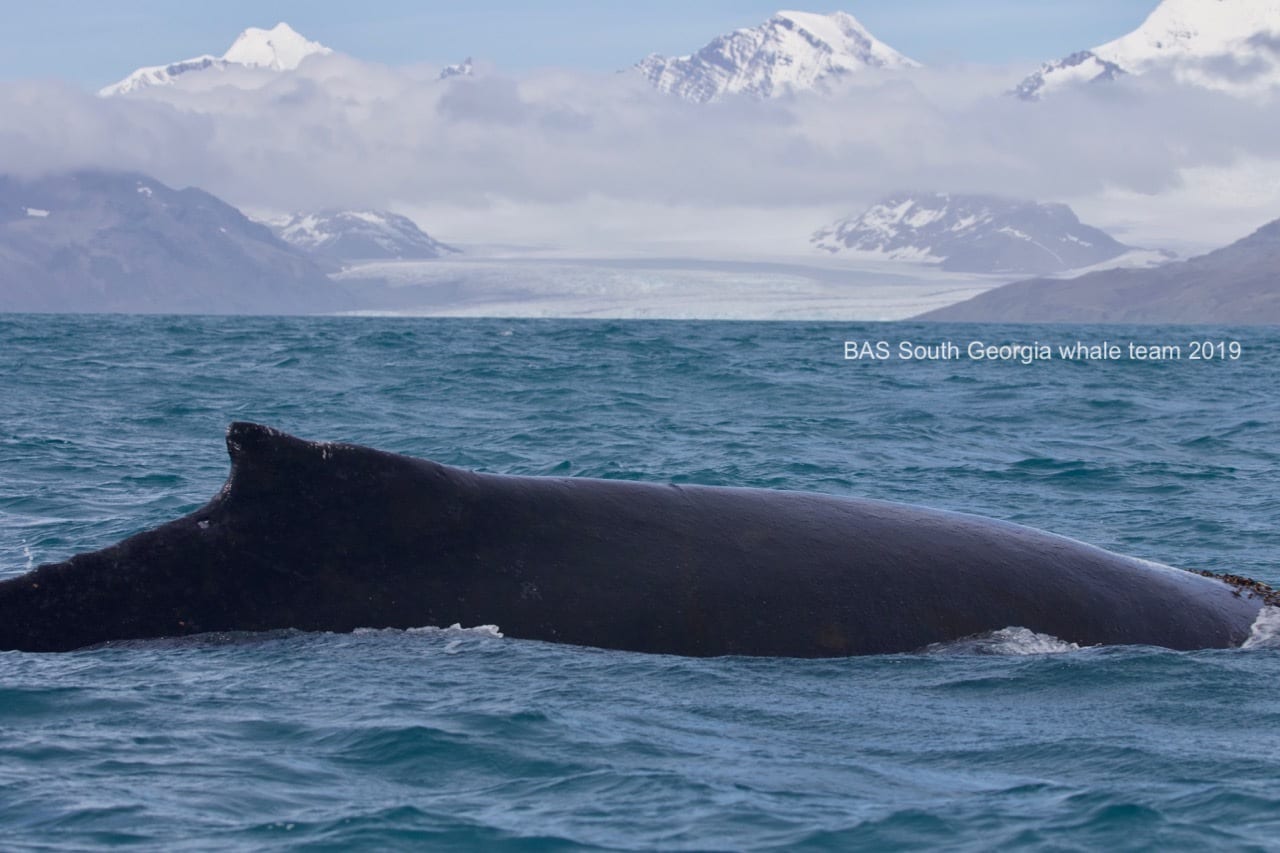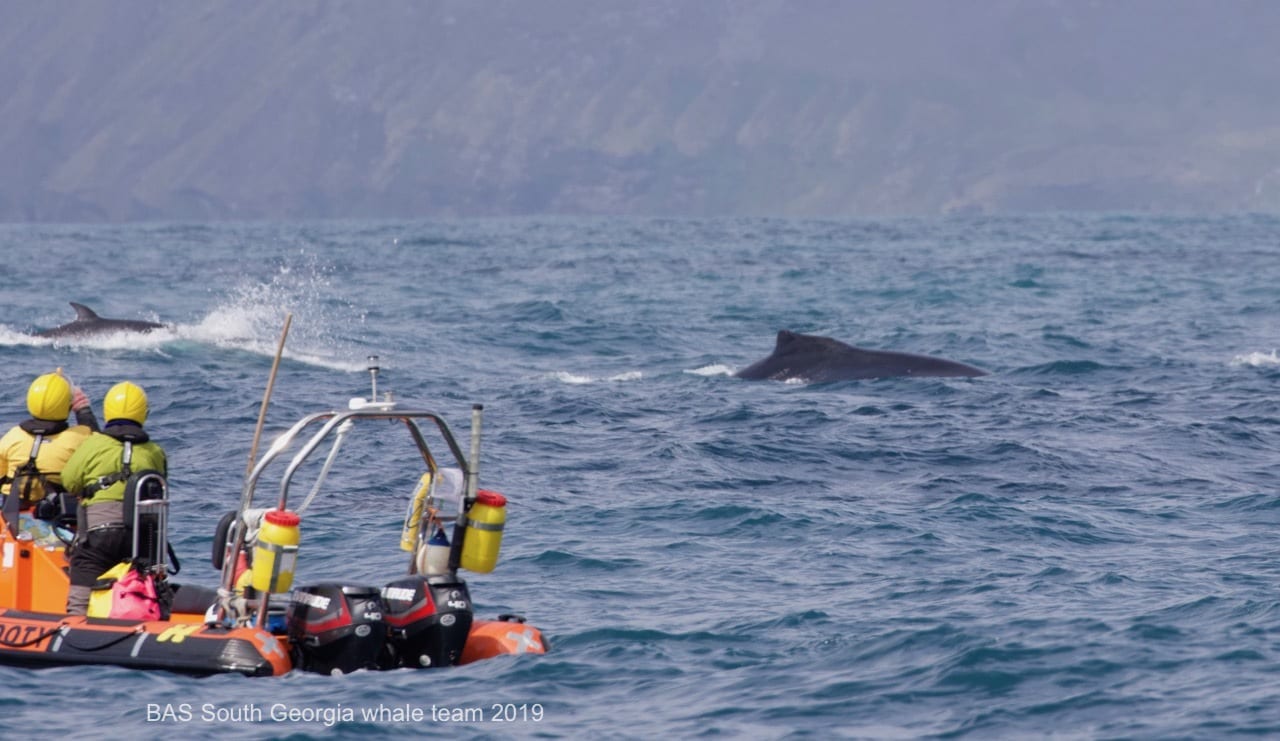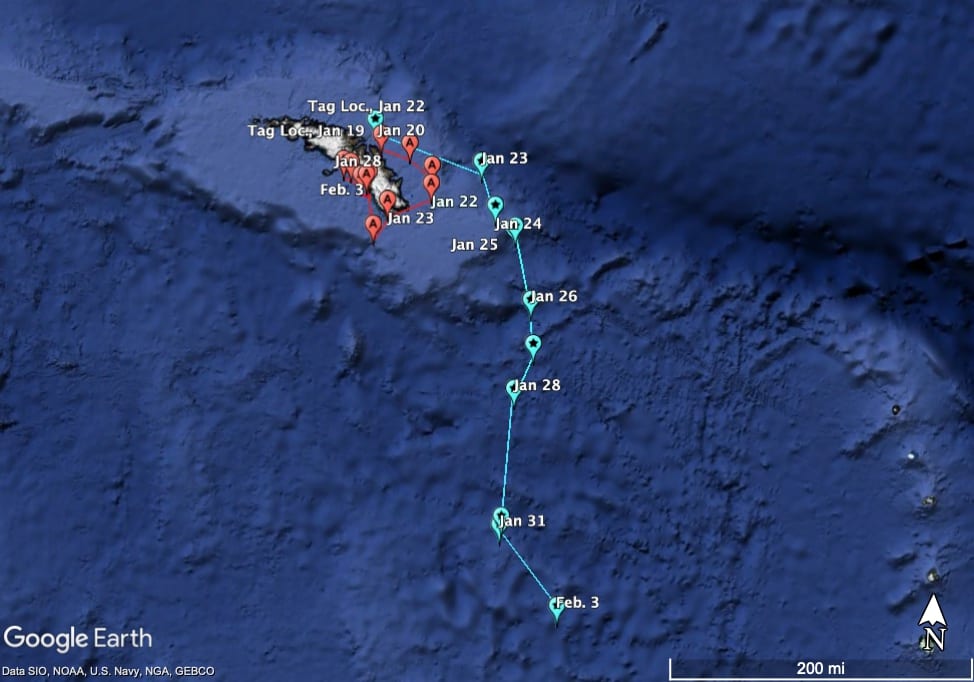Humpback whale supergroups
Humpback whales have been the unexpected star of this season in South Georgia. There have been ‘supergroups’ of humpback whales reported over the summer. By this, I don’t mean a Cream/Velvet Revolver/Audioslave style mash up of humpback whale song. Instead, this refers to large groups of several hundred humpback whales seen together, probably taking advantage of a big patch of prey. These were reported by different cruise ships travelling to South Georgia, particular to the northeast of the Island near Shag Rocks. This is unusual: typically, it is southern right whales that are seen in close to the island of South Georgia. Indeed, last year we saw a lot of right whales and only a few humpbacks. Why this year is different isn’t clear, but it could be linked to broader climate cycles, such as the mild El Nino occurring at the moment.

An increasingly common visitor
After southern rights, humpbacks are now the second most commonly seen whale in South Georgia waters. The species has made an incredible comeback, as 216,000 humpback whales were killed during the whaling era: 27,000 of these in South Georgia waters. During this field season we have seen humpbacks every time we have gone on the water. In one case, we saw a humpback mother and calf, and a minke whale, together.
Minke whales, small and nimble baleen whales, are also a common sight around South Georgia. In the picture below, you can see the minke whale fin to the left of the image, and the humpbacks to the right.

South Georgia: a whale-road station?
Like the right whales, humpbacks migrate from winter breeding areas to summer feeding areas, including the krill rich waters of South Georgia and the South Sandwich Islands. Previous work suggests that whales from the Brazilian wintering ground use areas to the east of South Georgia. Some humpbacks, like one we saw the other day in Cumberland Bay, do seem to be feeding around South Georgia. The picture below shows a whale coming up to the surface with a mouthful of water. The whale will then push the water through its baleen, trapping any krill or other prey in its baleen. However, many of the whales we have seen have been travelling in the same direction, from the northwest to the southeast. One of the whales we satellite tagged continued to go south, perhaps on its way to other feeding areas after stopping by South Georgia for a snack. Perhaps our satellite tagged whales will meet their Brazilian kin after a jaunt through South Georgia? We will wait to see what the satellite tracks show us next!


Help fund our research!
To donate please visit here!